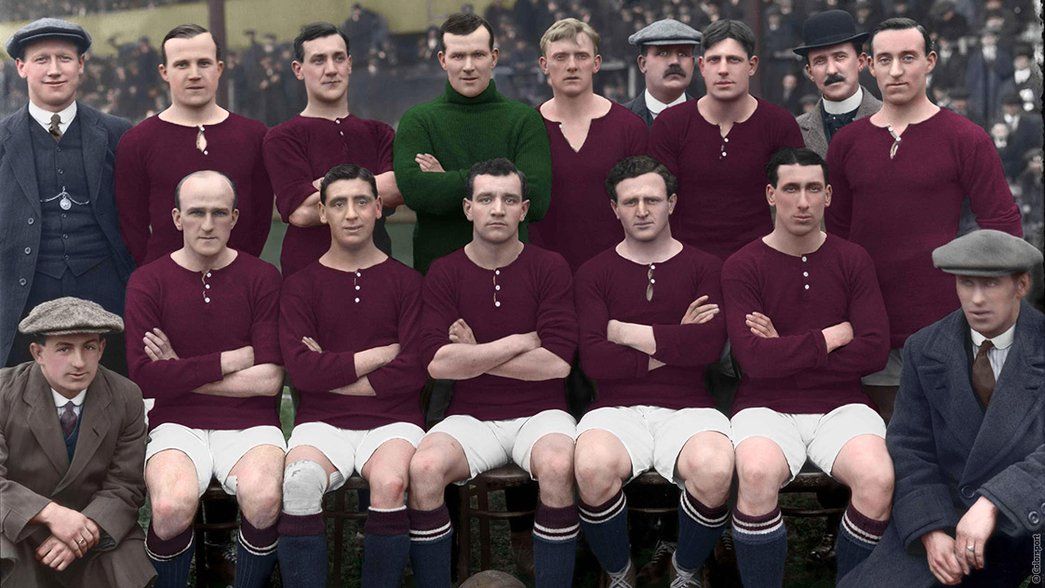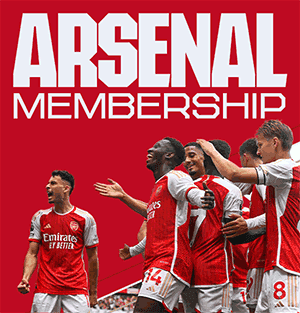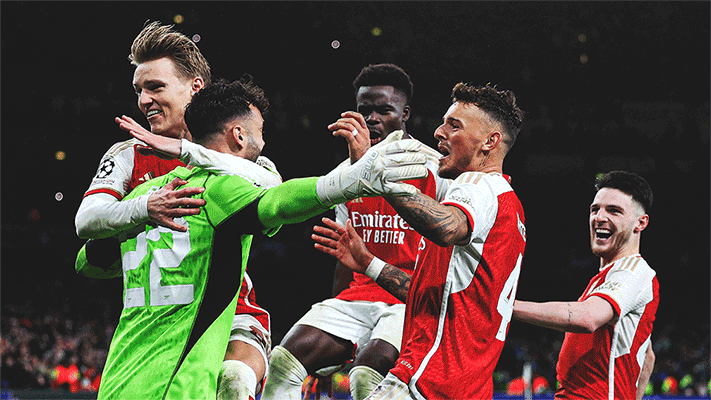In 1895, two years before the Club became professional, a small group of Nottingham Forest players, Fred Beardsley, Bill Parr and Charlie Bates, joined Dial Square FC, (the Club’s first name) and brought their old red kit along with them.
Working to a tight budget, the Club decided the most inexpensive way of acquiring a strip was to kit out the team in the same colour as the ex-Forest players.
This original kit was a dark red, with long sleeves, a collar and three buttons down the front. The shirt was worn with white knee length shorts and heavy woollen socks with blue and white hoops. The goalkeeper wore the same attire apart from the shirt - which was a hand knitted cream woollen polo neck jumper. It was this dark red kit that the team wore during their first season at Highbury in 1913/14.
"The original kit was a dark red, with long sleeves, a collar and three buttons down the front."
Beardsley, Parr and Bates’ generosity in providing shirts and inspiring the Club to play in red encouraged several other teams to follow Arsenal’s lead. One of the most famous examples is Sparta Prague whose president, Dr Petric, visited London in 1906. He returned home to Czechoslovakia after having watched Woolwich Arsenal and was so inspired by the kit that he demanded his team play in the same colours. Today, Sparta Prague continue to play in the same dark red kit, not dissimilar to Arsenal’s 2005/06 redcurrant. It was the arrival of manager Herbert Chapman in 1925 that launched the Arsenal kit as we know it today.
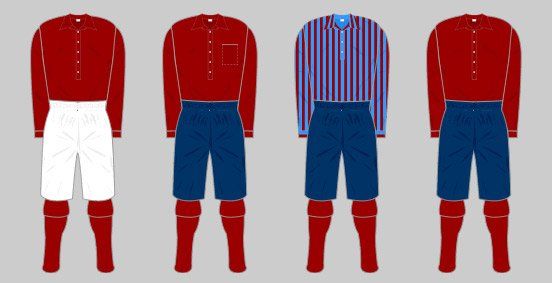
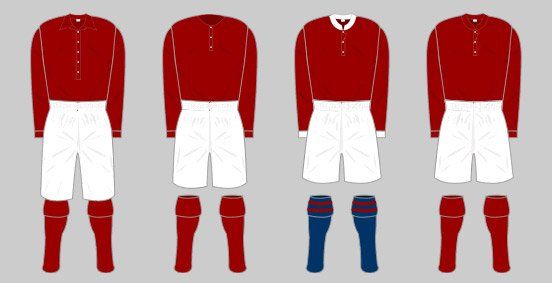
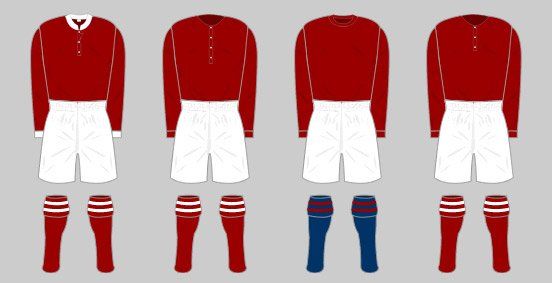
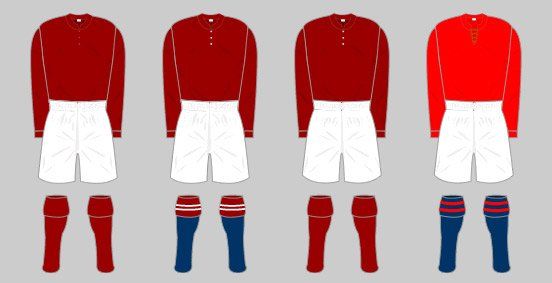
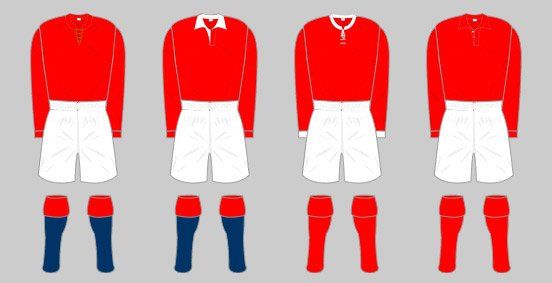
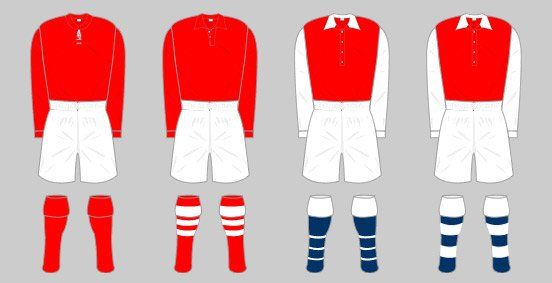
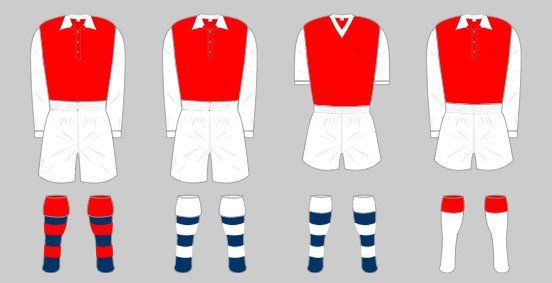
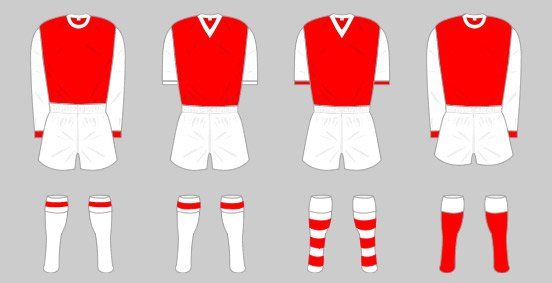
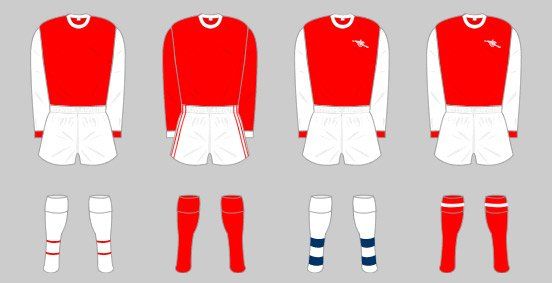
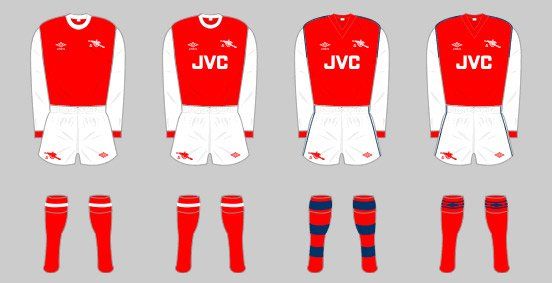
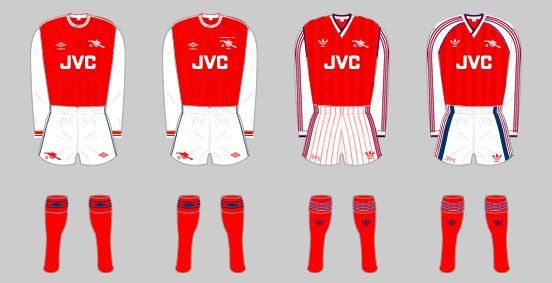
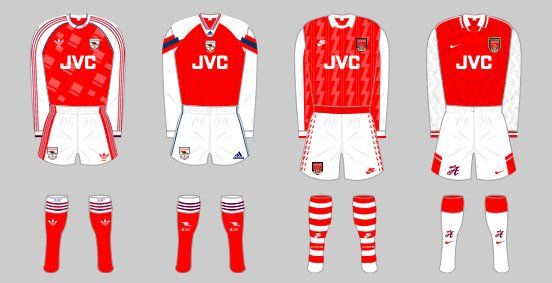
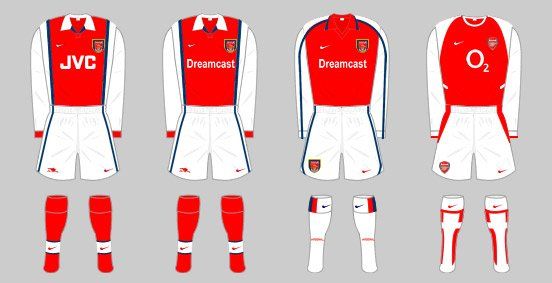
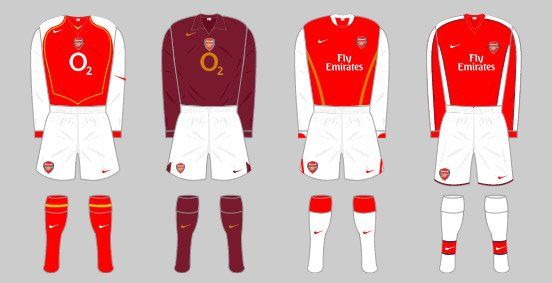
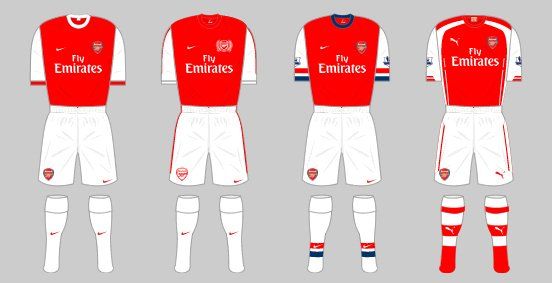
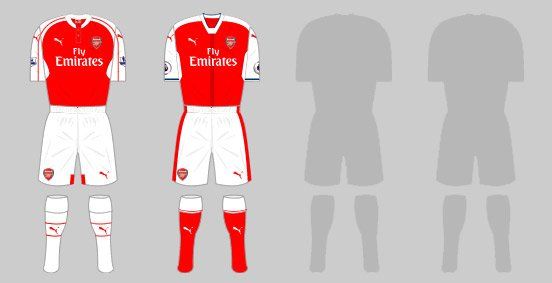
Depending on which source you believe, Chapman either noticed someone at the ground wearing a red sleeveless sweater over a white shirt or played golf with famous cartoonist of the day Tom Webster who wore something similar. Either way the ‘look’ inspired the manager to create a new strip combining a red shirt with white collar and sleeves. It also incorporated the Club badge, which was positioned on the left-hand side of the shirt.
In the 1950s a second kit was developed to combat a clash of colours with opposing home teams with similar kits. And in 1960, the Club moved away from the woven rugby shirt style to a new knitted cotton jersey in around 1960.
The Club’s famous canon graphic appeared on the shirt for the first time in the early 1970s. It was this shirt that Arsenal won their first famous ‘double’, both the League Championship and the FA Cup in the 1970/71 season.
In the late 1970s, the shirt featured a kit manufacturer’s logo for the first time, in this case ‘Umbro’. And in 1982 ‘JVC’ became the Club’s first shirt sponsor, which in turn made way for ‘SEGA’ in 1999. Three years later and ‘O2’ replaced the games company before themselves making way for, from the start of the 2006/07 season, ‘Fly Emirates’. This particular deal will last eight years.
Interestingly, for Arsenal’s Champions League away fixture against Hamburg on Wednesday, September 13 the team wore shirts with the insignia ‘Dubai’ on. This was because the opposition that night were also sponsored by Emirates and UEFA rules decree that no two teams, in opposition, can wear the same sponsor on their shirts.
To commemorate the Club's final campaign at Highbury, the home of Arsenal since 1913, the Gunners wore a special redcurrant shirt.
Designed to honour the colour of the Club's set of shirts for the first season at Highbury, they were adorned with gold lettering and accompanied by white shorts and redcurrant socks. For season 2006/07, the first at Emirates Stadium, Arsenal reverted to their famous red and white colours.
In 2007/08 Arsenal sported an away kit with a design that celebrated the pioneering spirit of the legendary Chapman. The kit embraced design features that highlighted Chapman’s influence over the game, with a return to the white shirts worn at various intervals throughout the Club’s history.
The white shirts proved hugely popular but the Club reverted to the 'traditional' away colours of yellow and navy blue for the 2008/09 campaign with a kit based on the 'Anfield '89' strip to celebrate the 20th anniversary of Arsenal's last-gasp title win on Merseyside.
Next
Copyright 2024 The Arsenal Football Club Limited. Permission to use quotations from this article is granted subject to appropriate credit being given to www.arsenal.com as the source.




